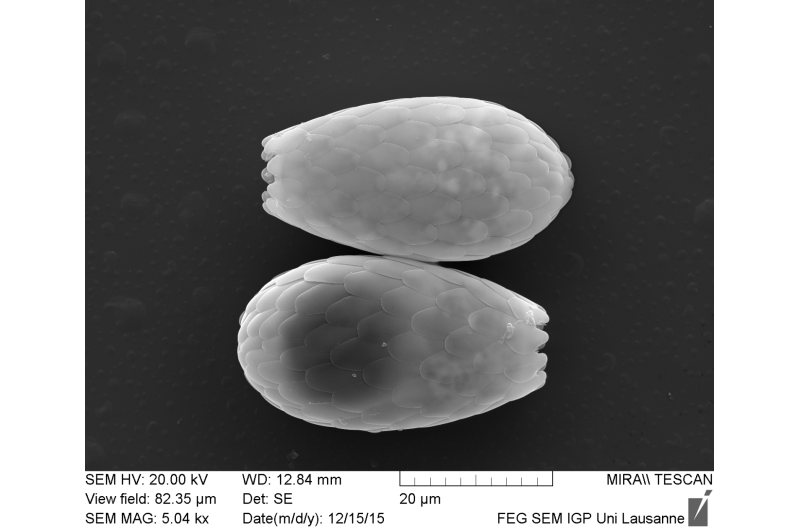Immense species richness of bacterial-eating microorganisms discovered in soil

Millions of microorganisms play a major role in the decomposition of soil matter. A group of researchers has just shown that there is an enormous diversity among a group of bacteria-eating microorganisms known as Cercozoa. The research suggests that a drier climate in the years ahead due to climate change will contribute to a shift in the number of soil microorganisms, and thus, a shift in the decomposition of soil matter, with as of yet to be known consequences.
Typically ignored, the millions of microorganisms that we tread upon daily play a major role in the decomposition of soil matter - one that is of far greater significance than that of the whales and pandas that tend to steal our attention. A group of researchers has just shown that there is an enormous diversity among a group of bacteria-eating microorganisms known as Cercozoa. In four small soil samples, each consisting of a half gram of soil, they discovered more than 1000 different species per sample. The research suggests that a drier climate in the years ahead due to climate change will contribute to a shift in the number of soil microorganisms, and thus, a shift in the decomposition of soil matter, with as of yet to be known consequences.
A team led by researchers from the Section for Terrestrial Ecology (Flemming Ekelund, Christopher B. Harder and Regin Rønn, at the Department of Biology, University of Copenhagen) has just published an article in the prestigious ISME Journal. The group's studies show that there is enormous species diversity among an oft-overlooked group of organisms known as Cercozoa. In four small soil samples, each consisting of just a half gram of soil, the researchers discovered more than 1000 different species per sample. The research was conducted in collaboration with Section for Microbiology staff (Department of Biology, University of Copenhagen) and the eminent British scientist, David Bass (Natural History Museum, London), and is supported by national research councils and the Carlsberg Foundation.
Associate Professor Flemming Ekelund of the Department of Biology explains, "Cercozoa are small bacteria-eating microorganisms that play a prominent role in soil ecology. Serious interest in these organisms began about 25-30 years ago, as people began to wonder what caused bacteria to disappear from soil. As interest took root, the number of known species increased sharply."
The name Cercozoa is derived from the Greek word, kerkos (tail), as some of the species within the group have a tail like end, and zoon (animal), as these organisms were previously thought to be a type of animal.
A single teaspoon of soil (a couple of grams) contains millions of microorganisms, so it is hopeless to create a species list by studying organisms one by one. Furthermore, many of these organisms belong to species unknown to science.
"We took small soil samples (½-1 gram), from which we analysed DNA strands (genetic material) from hundreds of thousands of organisms" (deep sequencing), explains Christoffer Bugge Harder. "However, it's difficult to catalogue and systematise this huge amount of data. To do so, we used the Section of Microbiology's capacity to deploy specialized statistics tools. Our British colleague, David Bass, contributed precise DNA references for the species in the group that have already been thoroughly catalogued. For now, this remains at just under 1000."
The studies were conducted in correlation with a climate experiment (Climate) that investigates the consequences of climate change in Denmark, as many climate researchers expect it to present itself, by 2075. Besides being able to report an enormous number of species in these samples, the research also demonstrated that a more arid climate, as expected in 2075, will probably lend to a shift in the occurrence of microorganism species; particularly within a group referred to as testate amoebae (picture). Researchers already know that climate change will result in significant shifts in plant and animal frequency. But it can also lead to changed frequencies among microorganisms, which means that climate change could have an impact on the ecological processes at work in soil. More studies are needed for researchers to specify the impact of an offset and the amount of microorganisms found in soil as a result of global warming.
Journal information: ISME Journal
Provided by University of Copenhagen





















